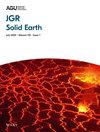短周期质量变化和下一代重力任务
IF 3.9
2区 地球科学
Q1 GEOCHEMISTRY & GEOPHYSICS
引用次数: 0
摘要
在2017-2027年地球科学与空间应用十年调查发布时,强调了减少GRACE后续任务与后续任务之间巨大差距的可能性。这导致了NASA和DLR合作的后续任务GRACE- continuity (GRACE- c)的快速发展,该任务预计将于2028年发射,以继续GRACE和GRACE- fo建立的地球系统质量变化时间序列。与此同时,欧空局继续开发一颗名为“下一代重力任务”(NGGM)的卫星,目标倾角在65°到75°之间,以补充GRACE-C卫星,该卫星将于本世纪30年代初发射。NGGM提供了在测量卫星分离的短周期变化时减少噪声的可能性,使用改进的加速度计相对于GRACE-C上飞行的加速度计。一种方法是使用2016年LISA探路者任务中演示的简化版引力参考传感器。而且,如果测量精度有很大的提高,那么在固定的地面轨道和大约5天的轨道重复周期下飞行NGGM似乎是可取的。本文章由计算机程序翻译,如有差异,请以英文原文为准。
Short-Period Mass Variations and the Next Generation Gravity Mission
At the time that the 2017–2027 Decadal Survey for Earth Science and Applications from Space was released, there was a strong emphasis on reducing the possibility of a substantial gap between the GRACE Follow-On mission and a successor mission. This has led to the subsequent rapid development of a successor mission in partnership between NASA and DLR, GRACE-Continuity (GRACE-C), expected to launch in 2028, to continue the timeseries of Earth system mass change established by GRACE and GRACE-FO. In parallel, ESA continues development of a pair of satellites called Next Generation Gravity Mission (NGGM), targeted for an inclination between 65° and 75° to complement GRACE-C, launching in the early 2030s. NGGM offers the possibility for reduced noise in measuring short-period variations in the satellite separation using an improved accelerometer relative to what is flying on GRACE-C. One pathway for this is by using a simplified version of the Gravitational Reference Sensors demonstrated on the LISA Pathfinder Mission in 2016. And, if the measurement accuracy is much improved, it appears desirable to fly NGGM with a fixed ground track and an approximately 5-day orbit repeat period.
求助全文
通过发布文献求助,成功后即可免费获取论文全文。
去求助
来源期刊

Journal of Geophysical Research: Solid Earth
Earth and Planetary Sciences-Geophysics
CiteScore
7.50
自引率
15.40%
发文量
559
期刊介绍:
The Journal of Geophysical Research: Solid Earth serves as the premier publication for the breadth of solid Earth geophysics including (in alphabetical order): electromagnetic methods; exploration geophysics; geodesy and gravity; geodynamics, rheology, and plate kinematics; geomagnetism and paleomagnetism; hydrogeophysics; Instruments, techniques, and models; solid Earth interactions with the cryosphere, atmosphere, oceans, and climate; marine geology and geophysics; natural and anthropogenic hazards; near surface geophysics; petrology, geochemistry, and mineralogy; planet Earth physics and chemistry; rock mechanics and deformation; seismology; tectonophysics; and volcanology.
JGR: Solid Earth has long distinguished itself as the venue for publication of Research Articles backed solidly by data and as well as presenting theoretical and numerical developments with broad applications. Research Articles published in JGR: Solid Earth have had long-term impacts in their fields.
JGR: Solid Earth provides a venue for special issues and special themes based on conferences, workshops, and community initiatives. JGR: Solid Earth also publishes Commentaries on research and emerging trends in the field; these are commissioned by the editors, and suggestion are welcome.
 求助内容:
求助内容: 应助结果提醒方式:
应助结果提醒方式:


